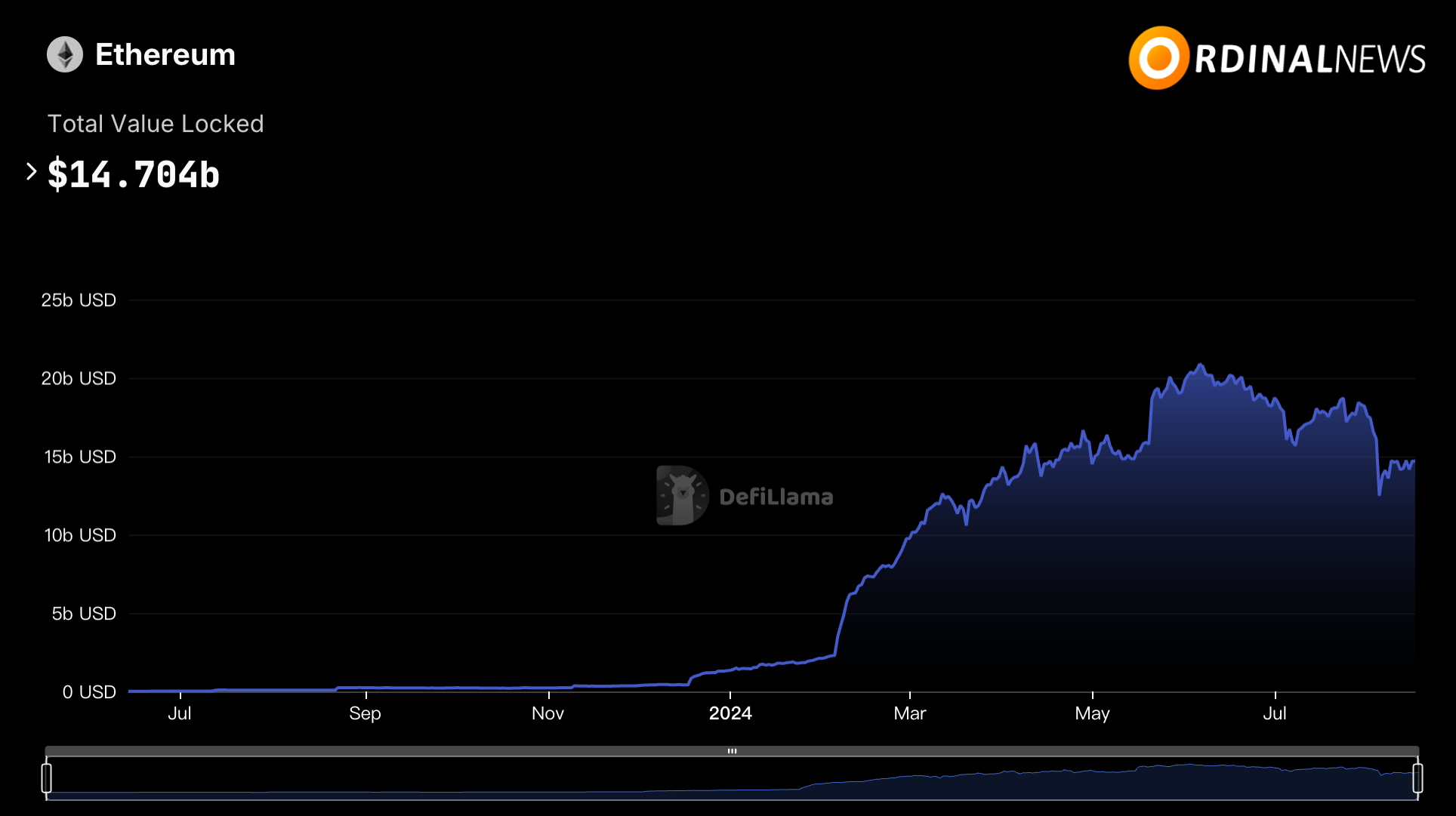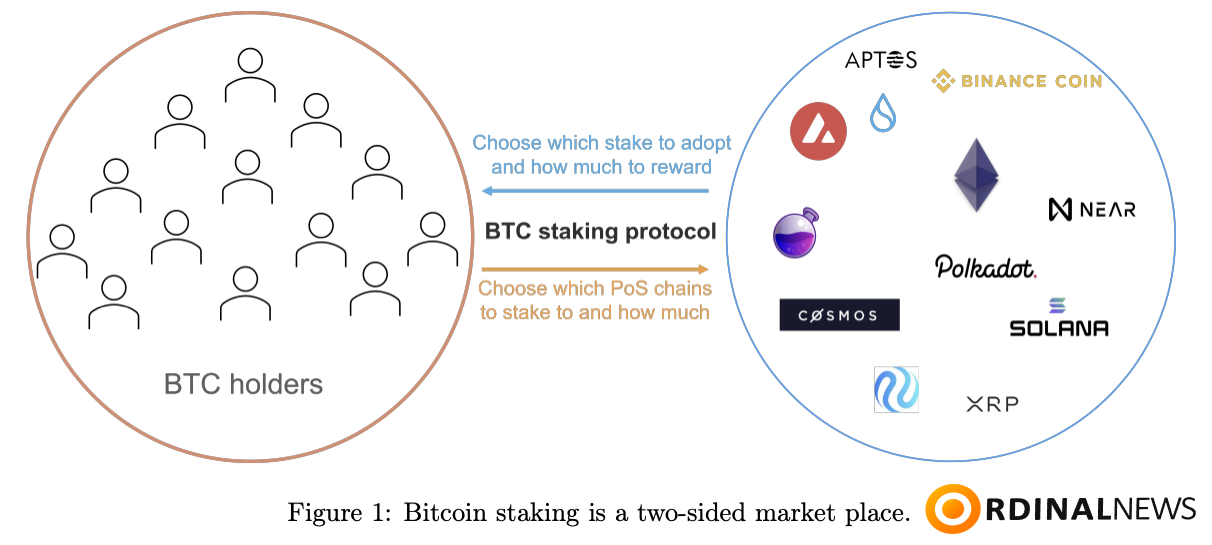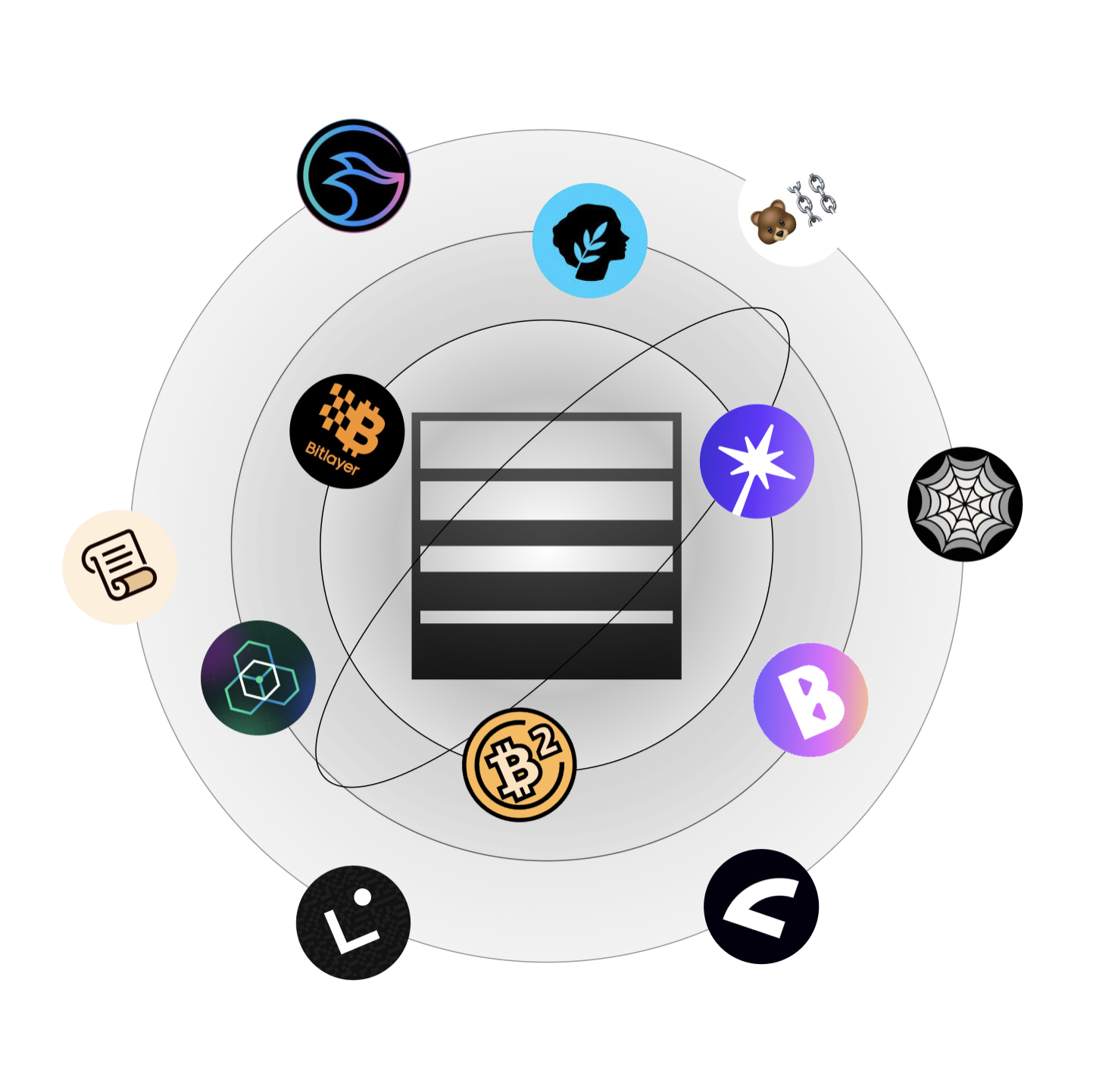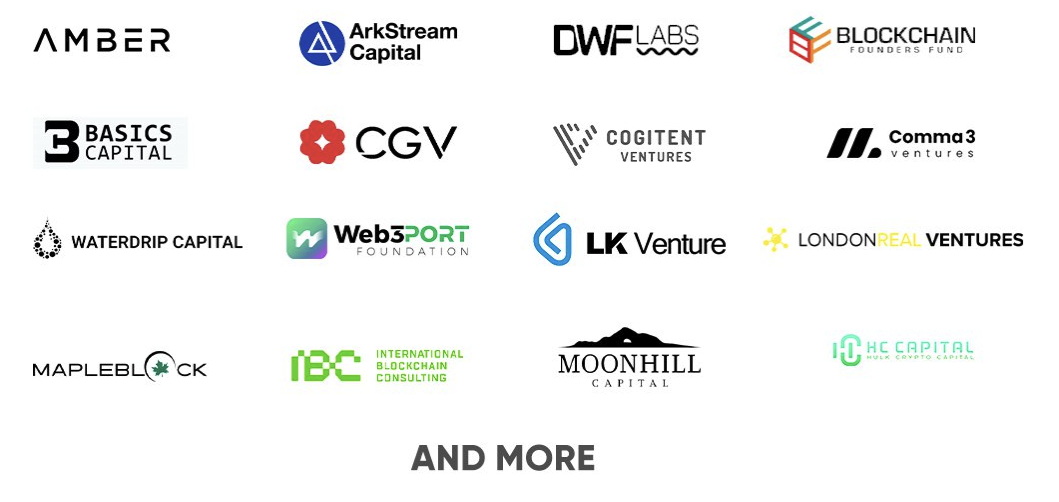Uniquid Layer — the WBTC in the Restaking Era, aggregating the Fragmented Babylon Ecosystem

1. The Bitcoin DeFi Ecosystem: From WBTC to BTC Restaking
1.1 WBTC Pioneers the BTC DeFi Ecosystem
Bitcoin, akin to a sleeping giant, will shake the world once awakened.
As the earliest and most widely recognized blockchain, Bitcoin holds an indisputable position in value storage and exchange. However, due to its lack of Turing Completeness, only a small amount of BTC participates in the flourishing DeFi ecosystem. Compared to Ethereum’s thriving ecosystem, the TVL of the Bitcoin ecosystem is less than 1% of Bitcoin’s market value.
Before the mainnet ecosystem explosion driven by the Taproot Upgrade, the BTC ecosystem mainly relied on external consensus, participating in the DeFi ecosystems of various blockchains through pegged tokens. Pegged tokens map BTC to other blockchains and maintain a 1:1 rigid exchange rate with the mainnet assets. This mechanism unlocks BTC’s financial value, enabling it to participate in DeFi scenarios like collateralized lending and liquidity mining, thus supporting various ecosystem use cases. For BTC maximalists, using pegged BTC tokens is the optimal way to earn yields from various DeFi ecosystems while holding BTC.
The pegged BTC mapping mechanisms are divided into centralized and decentralized categories:
- Centralized pegging mechanisms rely on trusted third-party custodians to manage mainnet BTC assets and mint pegged tokens. This model is based on off-chain social consensus and may carry trust and security risks.
- Decentralized pegging mechanisms use MPC and BFT algorithms to store BTC in multi-signature addresses, reducing single-point failure risks and enabling permissionless minting. However, the minting and redemption process is more complex.
WBTC is currently the most widely used pegged BTC, launched in 2018 by BitGo and other institutions. After being listed as a collateral asset by MakerDAO, WBTC quickly dominated the market, with supply soaring tenfold within three months. During the 2020 DeFi Summer, Ethereum’s demand for WBTC peaked, with supply reaching 281,000, but has since stabilized at 154,000, mainly used for lending (40%) and other DeFi use cases.

WBTC experienced rapid growth starting in 2022 and began to stabilize towards the end of that year.
Despite subsequent competition from alternative projects like RenBTC, tBTC, and BTCB, WBTC has maintained market dominance due to its first-mover advantage, network effects, and user trust, with a market share of 94.6% on the Ethereum mainnet.
However, WBTC’s high market share cannot mask its inherent centralization risks. In August 2024, BitGo and BiTGlobal created a joint venture, with Justin Sun becoming the actual controller. This raised concerns about WBTC’s centralization risks, leading to massive redemptions by institutions like Crypto.com.

After BitGo’s official announcement, approximately 1,380 BTC were redeemed across various channels, with no new WBTC minting reported so far.
Additionally, WBTC’s fees and lack of yield-generating attributes limit its appeal. Users pay a 0.2% fee when minting or redeeming WBTC, with no stable high returns to offset the centralized trust risks, reducing the incentive to bridge more BTC to on-chain financial scenarios.
Despite six years of development, WBTC’s market value still only accounts for 1% of BTC’s total market value, with growth stagnating. The key question for BTC DeFi’s growth is how to introduce secure and stable yields for BTC.
1.2 Babylon Initiates Native BTC Yield
While Bitcoin’s ecosystem has stagnated, ETH’s native risk-free yield is introduced through Ethereum’s successful transition to Proof of Stake (PoS) following the Merge Upgrade in late 2022, sparking an explosion in the ETH staking ecosystem. As of August 28th, 28.11% of ETH is staked, creating a staking market worth $35.5 billion and a restaking market worth $14.7 billion. DeFi products based on liquid staking tokens (LSTs) have come to dominate Ethereum’s financial ecosystem and are rapidly growing.


Top: Staking market; Bottom: Restaking market.
In contrast to Ethereum, Bitcoin, as the largest cryptocurrency by market value, is renowned for its decentralization, resistance to manipulation, and price stability, making it ideally suited for staking and restaking markets. The security of PoS depends heavily on capital stability, and Bitcoin’s characteristics naturally ensure the security of PoS.
With the approval of Bitcoin ETFs, compliance channels for Bitcoin allocation are opening up, especially for long-term investment institutions like family offices, private banks, and pension funds, which will further enhance Bitcoin’s price stability and its status as global digital gold.
Babylon emerges as the destiny of this new wave in the Bitcoin ecosystem, introducing the much-needed native yield for BTC.
Babylon maximizes Bitcoin asset security while awakening the dormant Bitcoin ecosystem with appropriate economic incentives. By implementing staking and slashing mechanisms using Bitcoin’s existing script language, Babylon’s staking contract allows users to safeguard PoS consumer chain economic security while retaining self-custody, introducing permissionless PoS risk-free yields (with an early cap of 1,000 BTC TVL).

Bitcoin staking is a bilateral market, linking the demand for yield generation with the need for economic security on PoS chains.
Babylon’s self-custody protocol eliminates reliance on third-party custodians, and its remote staking solution unlocks the potential of restaking. Projects within the Bitcoin ecosystem can build Babylon’s PoS yields into their protocols, layering CeDeFi returns to maximize economic incentives.
Babylon’s launch marks the beginning of native BTC yield, ushering BTC DeFi into a new phase and addressing core challenges that have constrained the BTC DeFi ecosystem in recent years.
1.3 The Fragmented BTC Layer2 Landscape
In addition to native yield, the rapid rise of the programmable BTC ecosystem has introduced safer DeFi yield sources for Bitcoin.
From the introduction of the ERC-20 standard by Ethereum developer Fabian Vogelsteller in November 2015 to the launch of EigenLayer on the Ethereum mainnet in April 2024, it took Ethereum nine years to achieve these milestones. However, the Bitcoin ecosystem has managed to catch up in just a year and a half.
At the end of 2022, Casey Rodarmor introduced the Inscriptions protocol, making asset issuance on the Bitcoin mainnet possible. In March 2023, Domo launched the experimental BRC-20 standard, enabling token deployment, transfer, and minting on the Bitcoin mainnet. By the end of 2023, the Ordinals ecosystem rapidly emerged, demonstrating the significant demand for Bitcoin asset issuance and the importance of DeFi applications. However, due to limited block space on the Bitcoin mainnet, the development of complex financial scenarios is constrained, leading to higher user costs and reduced user experience. Particularly, when the halving block height reached 840,000, the activation of the Runes protocol triggered the market‘s FOMO emotion, causing the mainnet transaction fees to spike to 2,000 satoshis/byte.

Rune Protocol launched on April 20, 2024, causing a spike in Bitcoin mainnet fees.
Some researchers proposed Bitcoin Improvement Proposals (BIPs) to enhance the mainnet’s smart contract capabilities by reintroducing the OP_CAT opcode, while others explored expansion solutions that did not alter Bitcoin’s original technical framework, driving the development of Bitcoin Layer2.
Represented by Botanix and BitLayer, Bitcoin Layer2 solutions are designed with Bitcoin Finality as the core foundation. They compress and bundle transaction data onto the Bitcoin mainnet, building trustless bridges to ensure security equivalent to that of the Bitcoin mainnet.
Compared to the challenges of bridging to Ethereum, bridging to Bitcoin Layer2 offers higher security and legitimacy, garnering broad consensus and support from the Bitcoin community. This has activated a significant amount of dormant Bitcoin liquidity, injecting it into the Bitcoin ecosystem in search of high-yield financial scenarios. Since most Bitcoin Layer2 solutions are fully compatible with EVM, many Ethereum-based DeFi applications have begun to build on Bitcoin Layer2, gradually forming a rich DeFi ecosystem.

Bitcoin Ecosystem Map by April 2024
1.4 The BTC Restaking Competition
The introduction of native yield solutions, combined with the enhancement of Bitcoin ecosystem programmability, has made restaking a significant DeFi use case in the Bitcoin ecosystem. Similar to the EigenLayer ecosystem on Ethereum, Bitcoin has also started forming a restaking ecosystem centered around the Babylon Staking protocol. Users can choose to stake BTC in a self-custodial manner on the Bitcoin mainnet, enjoying the shared security yields of Babylon; or they can deposit BTC into the LRT protocol, using liquid staking tokens (LSTs) to participate in the DeFi ecosystem on Bitcoin L2, gaining additional yields; or they can stake M-BTC into Solv Protocol during Merlin Seal’s Layer2 staking activities, exchanging for liquid yield tokens (SolvBTC) to participate in liquidity mining or CeFi funding rate arbitrage.
Restaking ecosystem projects collaborate with Babylon to introduce underlying yields for BTC pegged tokens, while the prosperity of these ecosystem projects, in turn, enhances Babylon’s PoS AVS service security.
However, the development of the BTC restaking sector brings new challenges:
- Unsustainable underlying yields: Many protocols rely on highly inflationary tokens as rewards, which cannot sustain high yields in the long term. If these protocols fail to achieve sustainable development, users may face a decline in token value after the TGE.
- Fragmented liquidity and user experience: Competition among restaking projects leads to fragmented liquidity within the BTC ecosystem, reducing overall utility. The complexity of switching between different Layer2s and wrapped tokens increases the barriers to use, limiting large-scale financial operations and cross-chain integration potential. Over time, this could lead to a situation where WBTC dominates, as happened in the past.
- High educational barriers: The rapid development and fierce competition within the Bitcoin ecosystem create high educational barriers. Users find it challenging to keep up with new protocol changes and understand various yield strategies, making it difficult to choose the optimal yield strategy.
- Security cannot be guaranteed: Many projects are launched hastily, without thorough security validation, increasing the risk to user assets.
These new issues require new solutions. The restaking era needs a new aggregated liquidity token, similar to WBTC in the past, to become the seamless bridge connecting various DeFi protocols.
The Uniquid Layer is born out of this need.
2. Uniquid Layer — People’s Liquidity Layer
2.1 What is Uniquid Layer?
The full name of the Uniquid Layer protocol is Unified Liquidity Layer. The purpose of the protocol is straightforward and can be compared to cross-chain liquidity aggregation networks based on chain abstraction, such as Cycle Network and AggLayer. It aims to seamlessly and efficiently connect the fragmented Bitcoin ecosystem.
Uniquid focuses on unified liquidity management, helping users avoid the complexity of calculating and comparing yields, and maximizing Bitcoin investment returns. To illustrate, traditional BTC Restaking protocols are like individual smartphone manufacturers that deliver devices with slight comparative advantages under specific parameters, attempting to lock users into their ecosystem. In contrast, Uniquid is more like a PC assembly service. It selects the most suitable components based on the user’s specific needs under different parameters and can quickly respond to risks or upgrades by replacing components when necessary.

As the “People’s Liquidity Layer,” Uniquid Layer addresses several key issues from the user’s perspective:
- Providing security assurance: Uniquid Layer employs ADV technology to maximize the security of liquidity aggregation. Additionally, for underlying Restaking protocols, Uniquid Layer meticulously researches the risk factors of various protocols, selecting the safest and most sustainable ecosystem projects for users.
- Maximizing Bitcoin returns: Uniquid Layer integrates various Restaking projects, calculating and comparing the underlying real yields of Bitcoin ecosystem projects to maximize liquidity returns.
- Offering a unified, easy-to-use liquidity management platform for Bitcoin holders: The BTC liquidity across different chains is managed and coordinated by the Uniquid Layer, ensuring seamless integration of liquidity across Layer1 and Layer2 chains.
- Lowering the participation threshold as the gateway to the Bitcoin DeFi ecosystem: Users no longer need to understand how to use various Restaking protocols. They only need to stake assets on the Uniquid Layer to enjoy the optimal returns from the aggregated Restaking projects, receive liquidity tokens, and participate in a larger DeFi ecosystem.
2.2 Simplifying BTC Restaking Participation Thresholds and Unifying BTC-Pegged Token Liquidity
The Uniquid Layer provides a unified framework to aggregate and manage Bitcoin liquidity across different blockchains and centralized exchange platforms, abstracting the entire Restaking ecosystem into four layers: Service Layer, Modular Layer, Abstraction Layer, and Liquidity Layer. The first three layers are encapsulated within the underlying protocol, and users only need to stake BTC pegged tokens of various forms and chains in the Liquidity Layer to achieve optimal annualized returns managed by the Uniquid Layer.

For Bitcoin ecosystem projects, asset security should always take precedence over economic incentives. For liquidity aggregation platforms, aggregating Bitcoin dispersed across different chains and protocols with minimal trust is the core technical pillar of the Uniquid Layer. The Uniquid Layer uses Anonymous Decentralized Verification (ADV) technology to aggregate BTC liquidity across all chains. For different BTC use cases, Uniquid Layer specifically designs decentralized privacy technology to ensure the security of the aggregation process and provide safe yield access:
- For the Bitcoin mainnet, Taproot is used to effectively hide the transmission of Bitcoin script information.
- For the EVM environment, decentralized signatures are employed to interact with smart contracts.
- For centralized exchanges, trusted third-party strategies are integrated.
- Custom asset custody solutions are provided in cooperation with MPC custodians.

ADV
ADV technology is used by the Uniquid Layer to protect and abstract liquidity, ensuring that it is safely aggregated into the Restaking protocols with the highest annual yields. Similar to threshold signature technology, the signing private key for cross-chain transactions is no longer controlled by a single node but is instead split among a permissionless anonymous node pool. When a user initiates a cross-chain transaction, the protocol randomly selects a group of nodes from the pool. Only by aggregating the signature fragments generated by this group of nodes can the signature be completed.
Since the signing members are randomly selected from the permissionless anonymous node pool, the ADV mechanism effectively prevents single points of failure in the signers, significantly increasing the cost of attacks by malicious nodes and ensuring the flexibility, anonymity, and scalability of the cross-chain ecosystem.

2.3 Restaking Module Integration: Unifying Protocol Providers
The Uniquid Layer integrates existing Restaking ecosystem projects within a powerful and adaptive modular framework, linking the yields from various projects and enhancing liquidity management solutions. The entire modular framework is divided into four modules: Active Verification Services (AVS) and Restaking Module, Cross-Chain Liquidity Module, DeFi Yield Module, and CeFi Yield Module. All Restaking project providers are abstractly integrated into this layer for easy selection and scheduling.
- AVS & Restaking Module: AVS yield is the cornerstone of restaking. The Uniquid Layer actively integrates advanced verification systems, maintaining high-security standards for underlying assets while maximizing liquidity returns through seamless restaking protocol integration.
- Cross-Chain Module: The cross-chain module promotes free and secure liquidity flow between different blockchains, optimizing the utilization of Bitcoin assets, and allowing users to explore diversified yield sources across multiple blockchain ecosystems.
- DeFi Yield: This module aims to enhance the yields of both decentralized and centralized finance by integrating Bitcoin liquidity into various DeFi platforms, maximizing yield potential through diversified DeFi opportunities.
- CeFi Module: This module integrates Bitcoin liquidity into the centralized financial system, offering users more arbitrage yield opportunities.

2.4 Restaking as a Service: Maximizing User Returns
By participating in Uniquid Layer’s Restaking services, users can obtain the best returns on their staked assets. The Uniquid Layer aggregates all liquidity yield sources into the Restaking Service Layer, where dynamic algorithms and analysts calculate the expected returns from various yield sources to ensure maximum return on user asset investments. Additionally, users staking assets in the Uniquid Layer’s Liquidity Layer will also receive Uniquid Points rewards.

2.5 LiqBTC: The WBTC of the Restaking Era
By staking assets within the Uniquid Layer, users can not only maximize their investment returns but also obtain the liquid staking token LiqBTC. LiqBTC is designed not only as a liquid staking token (LST) but also as a standard for cross-chain yield BTC-pegged tokens. By integrating with over 10 blockchain DeFi ecosystems, LiqBTC will, like WBTC, link the vast BTC financial ecosystem beyond the Bitcoin mainnet, avoiding centralization risks while providing the highest underlying returns in the Restaking era.

2.6 Roadmap and Future Plans
The Uniquid Layer will complete the construction of the underlying protocol framework in 2024. In Q3, it will integrate the Restaking-as-a-Service functionality and launch an early supporter incentive program. By Q4, the liquidity module will be integrated, and the liquidity abstraction layer protocol will be developed. The testnet is expected to go live in Q1 2025, along with the deployment of verification nodes. The mainnet will be launched in stages from Q2 to Q4, gradually integrating LiqBTC into various chain DeFi ecosystem protocols, thereby building a cross-chain liquidity market.
2.7 Funding Status
Uniquid Layer has secured substantial investment from renowned domestic and international venture capital firms, including Amber Group, DWF Labs, ArkStream Capital, and others.

3 Conclusion
The introduction of Babylon’s native yield brings the Bitcoin financial ecosystem into a new era of exploration. As a blue ocean market worth hundreds of billions, the key to dominating the Bitcoin liquidity finance throne lies in providing BTC users with higher security, greater actual returns, and lower participation thresholds. In this race, Uniquid Layer, as a latecomer to liquidity aggregation, is poised to integrate the currently fragmented BTC liquidity, providing users with a smoother cross-chain liquidity interoperability experience, akin to how WBTC led the BTC DeFi ecosystem.




